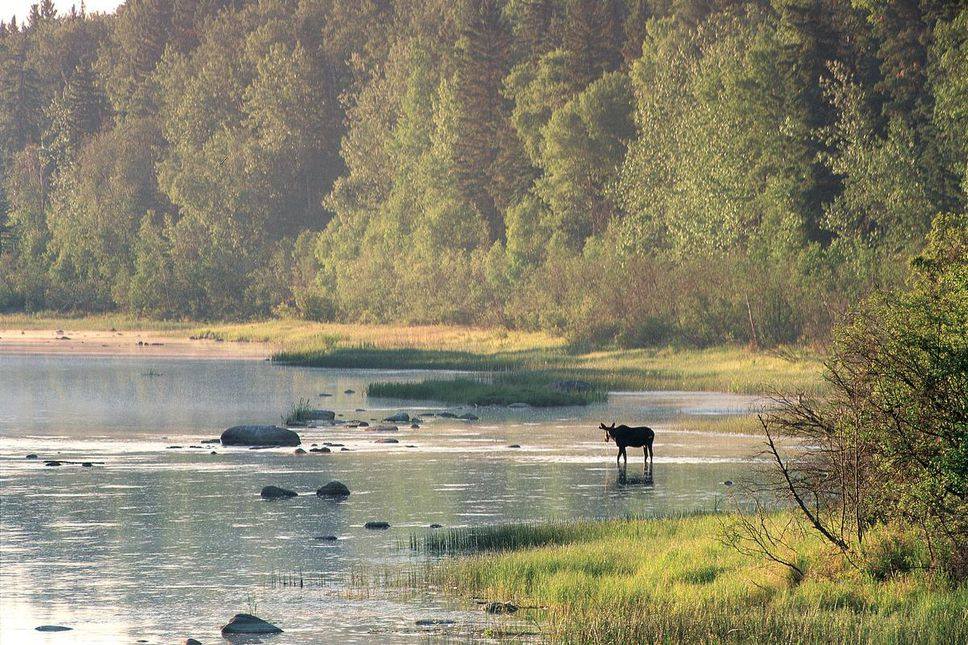|
by Sara Mak This is part two of an article series by Sara Mak. Please view the last ELB blog post to read part one. By 2020, Canada aims to complete 19 biodiversity targets—it’s ambitious, but achievable! These targets vary widely in terms of their scope, difficulty, and level of detail. Just to give an example, here are Targets 6 and 1: Target 6: By 2020, continued progress is made on the sustainable management of Canada’s forests. Target 1: By 2020, at least 17 percent of all terrestrial areas and inland water, and 10 percent of coastal and marine areas, are conserved through networks of protected areas and other effective area-based conservation measures. In addition to preserving and enhancing biodiversity within the country, these targets also ensure long-term environmental stewardship and participation from all Canadians. Examples of this include the incorporation of biodiversity into the school curriculum as well as the adoption of more ecosystem-based approaches in agriculture and aquaculture. Another aspect to the success of the biodiversity targets is the involvement of Indigenous groups. While they may only make up 4.9% of the national population, they possess the traditional knowledge and skills Canada needs moving forward. As for current involvement, Zurba et al (2019) describe a few fundamental roles including consultation, management, or governance. Indigenous involvement in the management of Canadian ecosystems isn’t limited only to the completion of the biodiversity goals. Over the years more opportunities have been made available for Aboriginal groups. Through the First Nations Land Management Act, funding is available for establishing land and managing the environment and natural resources within it. This collaboration is ideal not only for Canada’s ecosystems but also as an opportunity to strengthen the relationship between the Government and First Nations groups. As a member of the UN’s CBD, Canada is required to regularly submit national reports summarizing their progress with regards to the adoption of the Convention. For the last few years, these reports have also detailed the progress made on each of the biodiversity targets. And with 2020 just around the corner, Canada seems to be on track to accomplishing most of its goals. The 6th National Report tells us that (good news!) most of the targets are moving along with steady progress. Some of the targets are seeing slower progress but there are renewed efforts to pull through during this final stretch. Steady progress: As of spring 2019, 11.8% of Canada’s land and freshwater is conserved, according to the Canadian Parks Council. Photo from the Toronto Star. Canada has acknowledged that Indigenous knowledge is invaluable and that the success of the biodiversity targets is dependent on meaningful collaboration between all levels of government and Indigenous groups. As such, their contributions are spread amongst all of the goals. In addition, of course, to the two dedicated to the improvement of Indigenous rights to the environment (Targets 12 and 15). Representatives from First Nations, Inuit or Métis peoples also participate as members of the Canadian delegation during meetings with the CBD and directly influence current and future plans as advisors. Conclusion What better way to combat extinction than by increasing biodiversity? Through the UN’s CBD, the international community is committing to a more sustainable and hopeful future by working towards improving global biodiversity levels. As the country with the second largest landmass and a reputation for natural beauty, Canada has its work cut out. Deadline aside, we need to look further than just the completion of the targets. Securing Canada’s environmental future will take long-term planning — some of which was established through the targets and commitment, as well as partnerships with Indigenous groups. After all, Canada has a lot to protect. It will take a lot of work to adapt to the changing environment, but our future depends on it. References McCall, R. (2019). Human actions are putting the survival of a million species on the line. IFL Science. Retrieved from: https://www.iflscience.com/plants-and-animals/human-actions-are-putting-the-survival-of-a-million-species-on-the-line/ Schuster, R., Germain, R. R., Bennett, J. R., Reo, N. J., & Arcese, P. (2019). Vertebrate biodiversity on indigenous-managed lands in Australia, Brazil, and Canada equals that in protected areas. Environmental Science & Policy, 101, 1-6. Wilson, K. (2019). Indigenous-managed lands have the greatest biodiversity, says UBC-led study. The Georgia Straight. Retrieved from: https://www.straight.com/news/1281011/indigenous-managed-lands-have-greatest-biodiversity-says-ubc-led-study Zurba, M., Beazley, K. F., English, E., Buchmann-Duck, J. (2019). Indigenous protected and conserved areas (IPCAs), Aichi Target 11 and Canada’s pathway to Target 1: focusing conservation on reconciliation. Land, 8(1), 10.  About the Author Sara’s love of animals and the environment is what led her to study Geography and Environmental Management at the University of Waterloo, and as a recent graduate, she hopes to further pursue her passion in wildlife conservation. In her free time, she loves stargazing, hiking and exploring the great outdoors (preferably with her dogs)!
8 Comments
1/9/2020 08:20:48 pm
There are so many reasons why we should admire Canada. Aside from the fact that they prioritize healthcare among their people, they always see to it that they are serving not just their people and the animals, but the whole environment as well. This 2020, I can see that Canada has a major plan about the country's biodiversity. This is such a huge challenge if we are going to think of it. But knowing that it's Canada that will have it executed, I am sure that they can achieve that as we all know that Canada has always been proactive!
Reply
1/25/2023 11:10:26 am
It probably won't be fair, yet moguls essentially draw regard without saying a word. They pull up in their iPod-white stretch limousine. They leave wearing their Gucci suite and their Armani glasses. They purchase the best wine and wear the best cologne. They are the crème of the yield for some daters, and they are battled about without holding back.
Reply
1/31/2023 10:19:26 am
An oil based ink is applied to paper by getting the pen across paper which makes a little metal ball leave an ink mark as it rolls across the paper. Oil based ink endures longer and this specific style pen gives is exceptionally simple to compose with which makes it an ideal pen for any individual who does an enormous measure of composing.
Reply
2/7/2023 08:52:18 am
Mats are areas of tangled hair, to eliminate a mat first attempt to unwind the hair with your fingers on the off chance that you can't unravel it utilize a mat splitter to trim through the mat then, at that point, brush again with a slicker brush, never be enticed to trim out the mat with scissors since they as a rule sit near the skin making it extremely.
Reply
2/13/2023 06:50:21 am
Pant accessories are a crucial part of any wardrobe, and iron-on patches are a great way to upgrade them. They can help you add some personality to your pant accessories and make them stand out. Denim iron-on patches are a popular choice for those looking to add some style to their denim clothing. With a variety of designs and styles available, it's easy to find a patch that fits your taste.
Reply
9/22/2023 01:30:31 am
Twitter's character limit forces users to condense their thoughts into concise, impactful posts.
Reply
10/12/2023 04:33:32 am
Your veterinarian can provide you with a vaccination schedule tailored to your dog's specific needs and risks.
Reply
Leave a Reply. |
ELB MembersBlogs are written by ELB members who want to share their stories about Ontario's biodiversity. Archives
January 2023
Categories
All
|


 RSS Feed
RSS Feed